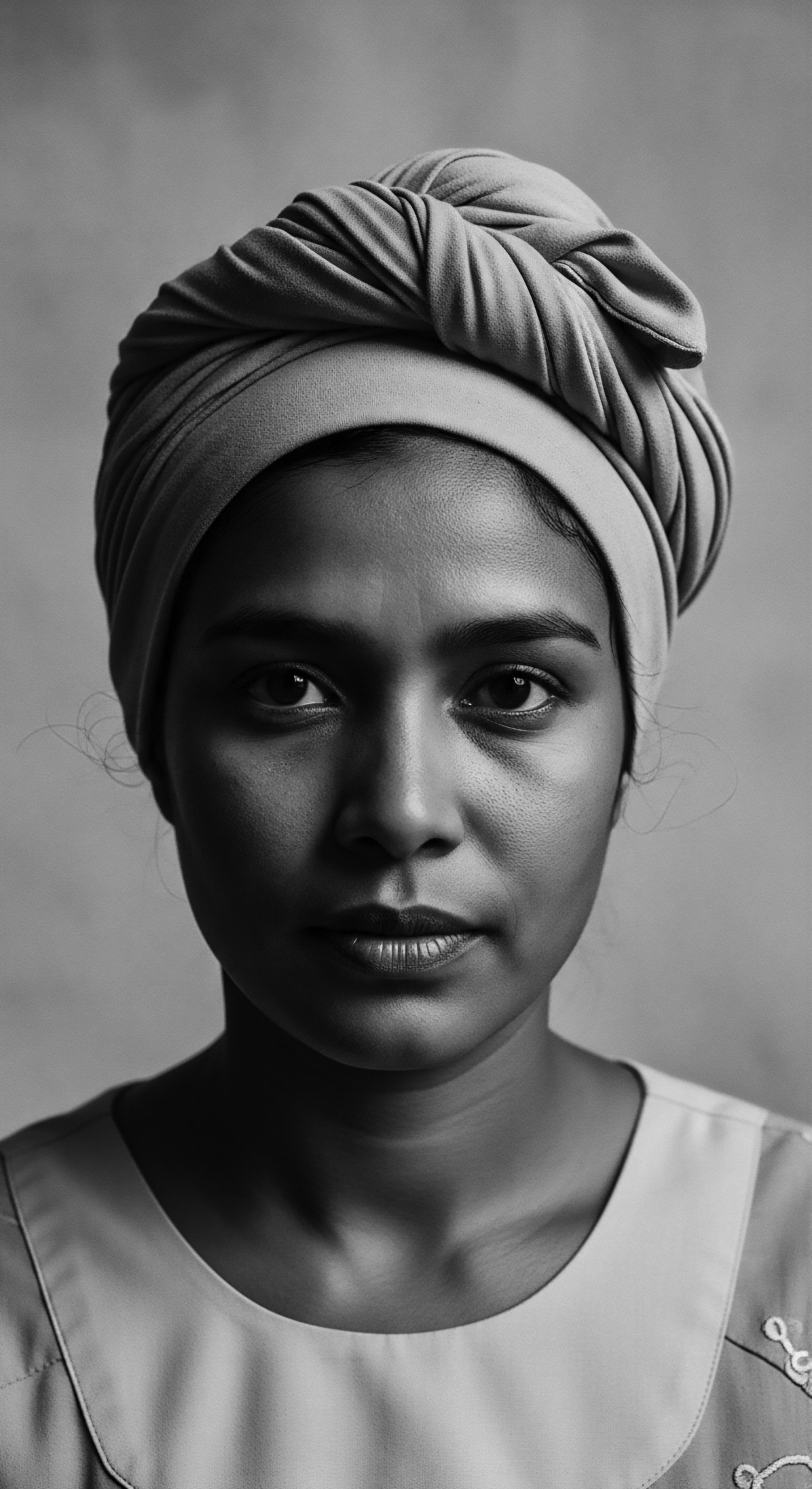
Fundamentals
The concept of ‘Ancient Hair Traditions’ extends far beyond mere aesthetic choices; it represents a profound connection to ancestral practices, communal identity, and spiritual beliefs, particularly within the rich context of textured hair heritage. This phrase refers to the collective body of knowledge, rituals, and styling techniques that have been passed down through generations in various cultures, predating modern commercial hair care practices. It is a living archive, preserved in the very strands of our hair, carrying the whispers of forebears and the wisdom of bygone eras. For those new to this area of study, understanding this heritage begins with recognizing hair not as a superficial adornment, but as a deeply significant marker of belonging and a conduit for personal and collective narratives.
Across diverse civilizations, especially those with a strong legacy of textured hair, the meticulous care and styling of hair were rarely arbitrary. They were often interwoven with societal structures, age-grade systems, marital status, and even spiritual roles. The way one’s hair was presented could immediately convey a wealth of information to an observer, serving as a silent language within communities. This historical practice contrasts sharply with many contemporary views that often detach hair care from its deeper cultural and historical roots.
Ancient Hair Traditions represent a profound cultural legacy, a living language spoken through the artistry and care of textured hair across generations.
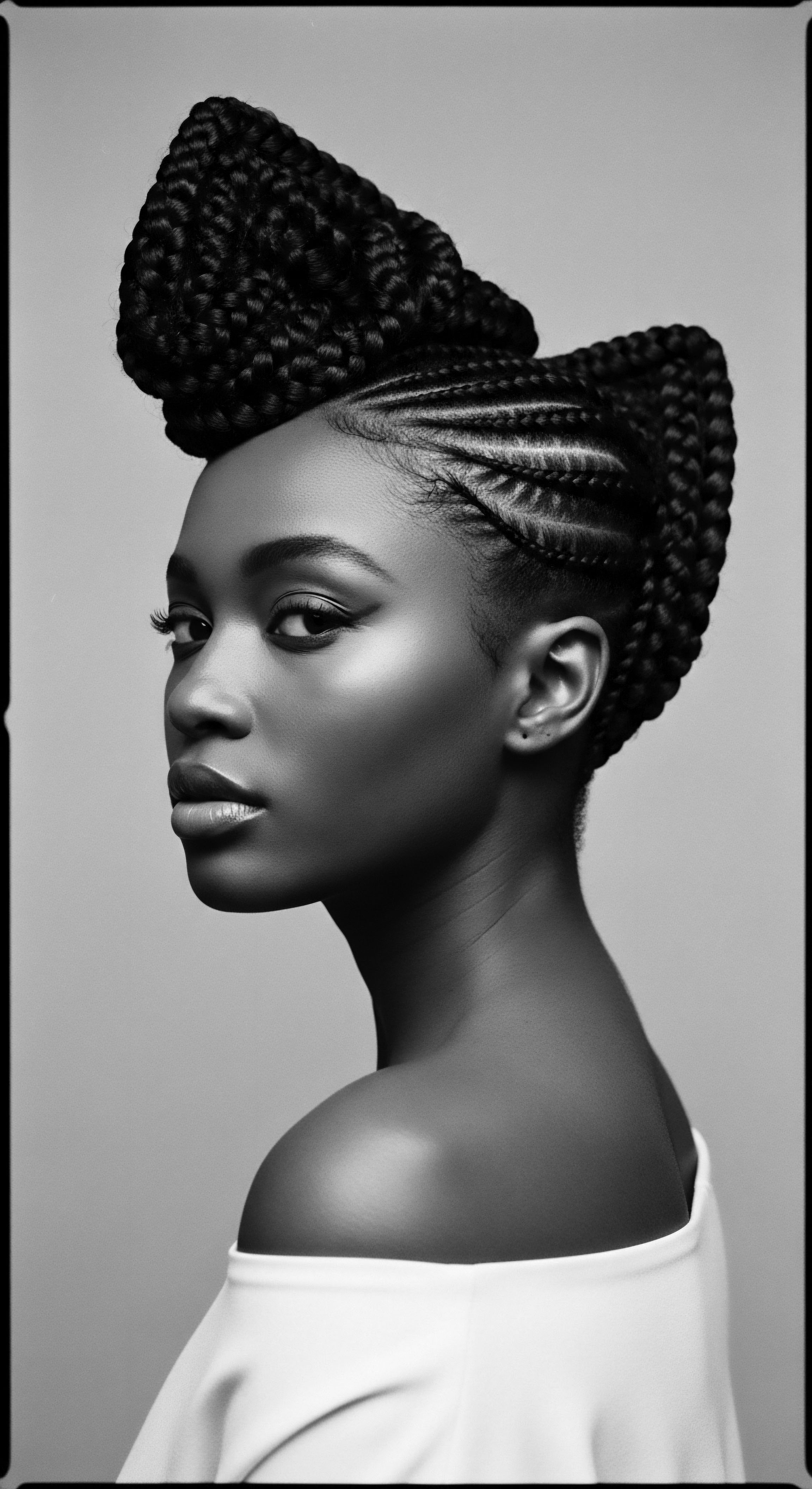
Echoes from the Source ❉ Hair as Elemental Biology and Ancient Practices
The journey into ancient hair traditions commences with an appreciation for the elemental biology of hair itself. Textured hair, with its unique helical structure, exhibits a natural resilience and capacity for diverse forms that have been celebrated and manipulated through millennia. Early communities understood the intrinsic qualities of hair, recognizing its protective qualities against environmental elements and its responsiveness to natural ingredients. This primal understanding formed the bedrock of early hair care.
- Natural Protectants ❉ Ancient peoples utilized substances from their immediate environment, such as plant oils, clays, and herbal infusions, to cleanse, moisturize, and fortify hair. These practices were often dictated by local flora and climatic conditions.
- Styling for Function ❉ Beyond aesthetics, ancient hairstyles frequently served practical purposes, such as keeping hair out of the way during labor, protecting the scalp from sun exposure, or minimizing tangling.
- Communal Rituals ❉ Hair care was seldom a solitary activity. It was often a communal ritual, a time for sharing stories, transmitting knowledge, and reinforcing social bonds. This shared experience instilled a deep sense of community and collective responsibility for hair health.
For instance, in numerous ancient African societies, the act of hair dressing was a social gathering, a moment for women to connect, share wisdom, and strengthen familial ties. These sessions were not simply about styling; they were intimate exchanges, reinforcing the fabric of community. The physical manipulation of hair became a medium for cultural transmission, a tender thread connecting generations through shared touch and whispered narratives.
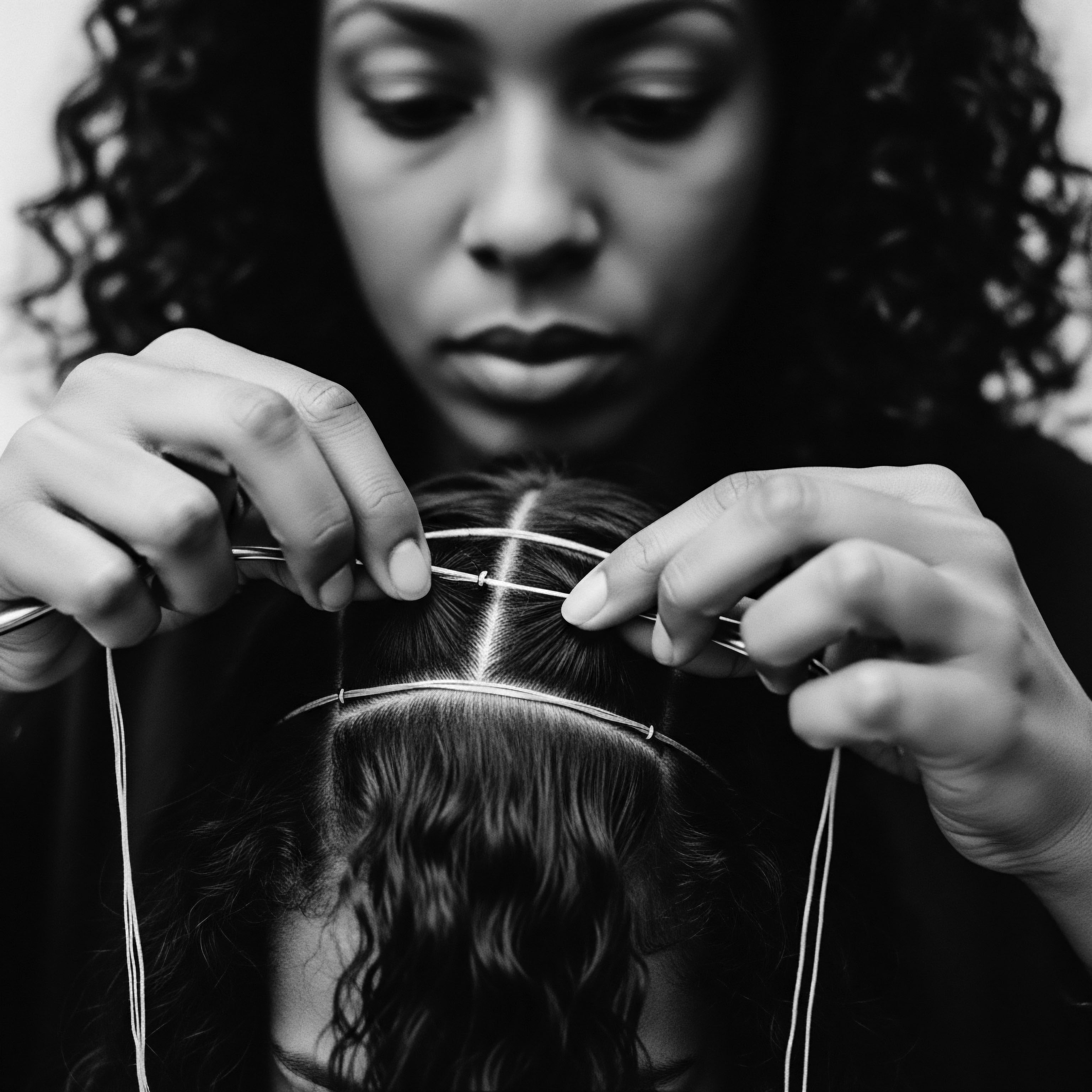
Intermediate
Stepping beyond the foundational understanding, the intermediate scope of ‘Ancient Hair Traditions’ invites a deeper examination of how these practices solidified into intricate systems of cultural expression and identity, particularly for communities with textured hair. It delves into the sophisticated ways hair was employed as a medium for conveying social status, spiritual beliefs, and communal belonging. This understanding moves past simple definitions to explore the rich contextual layers that gave each strand its deeper meaning.
The historical narrative reveals that for many African civilizations, hair was regarded as a sacred part of the body, a conduit for spiritual energy, and a direct link to the divine. The very top of the head was often considered the point of entry for spiritual connection, rendering hair a communal asset that tied individuals to their ancestors and the spiritual realm. This perspective profoundly shaped the rituals and reverence surrounding hair care.
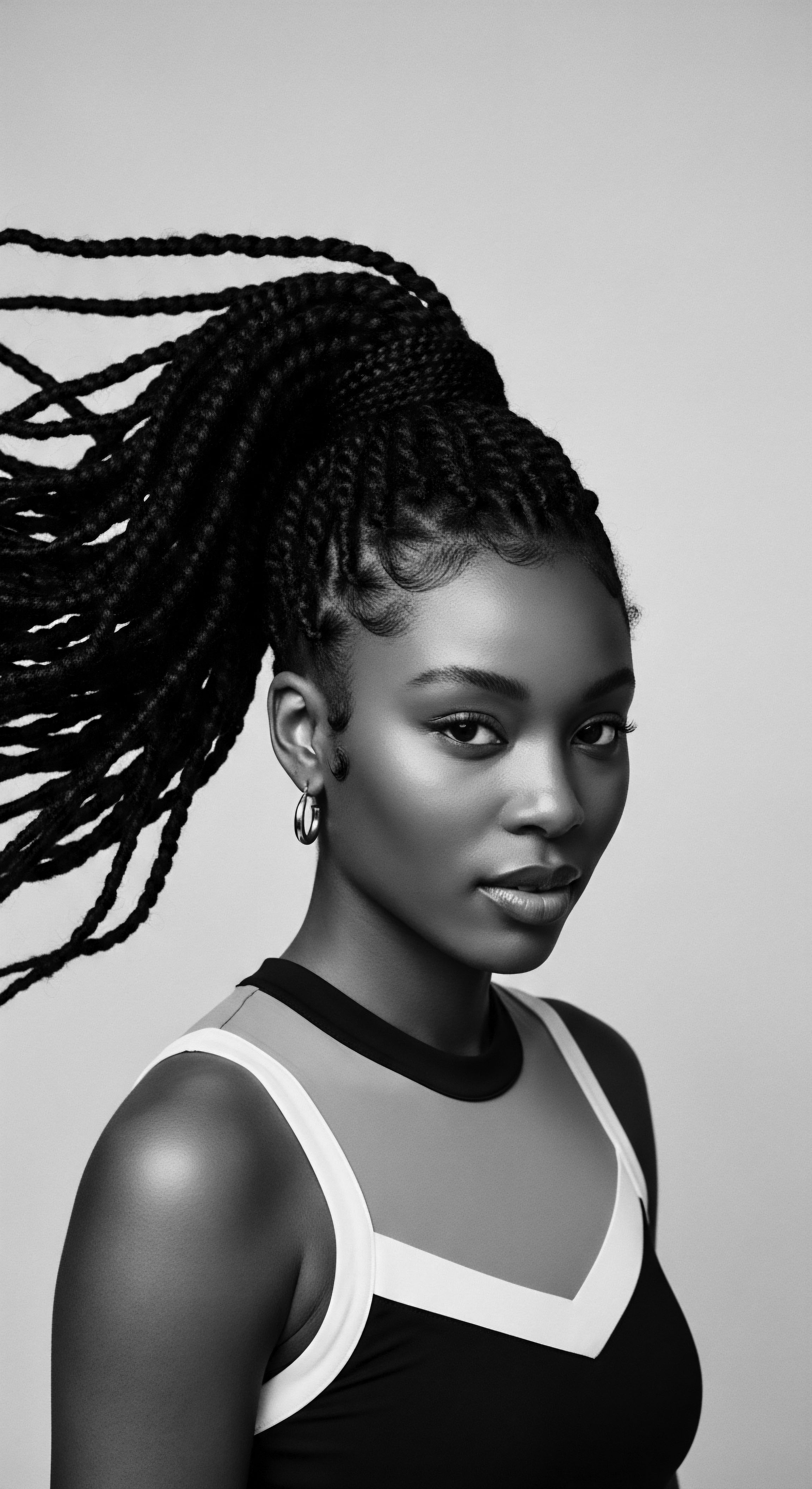
The Tender Thread ❉ Living Traditions of Care and Community
The care of textured hair in ancient societies was an art form, demanding skill, patience, and a deep understanding of natural properties. This involved more than just styling; it encompassed comprehensive routines of cleansing, conditioning, and adornment using ingredients readily available from the earth. The knowledge of these practices was often held by respected elders or skilled practitioners, passed down through oral tradition and hands-on teaching.
Consider the Maasai people of East Africa, where hair held significant cultural importance. Young Maasai warriors, known as morans, had distinctive hairstyles that marked their transition into the warrior class, symbolizing strength and bravery. These styles included shaved and semi-shaved patterns alongside distinctive braids.
In contrast, Maasai women typically shaved their heads to signify important rites of passage, such as circumcision and marriage, representing a fresh start as they transitioned through life’s stages. This stark difference in practice, deeply embedded in communal rites, illustrates the communicative power of hair within a specific cultural framework.
| Traditional Ingredient/Practice Shea Butter (West Africa) |
| Ancestral Purpose/Benefit Moisturizing, scalp health, sun protection. |
| Contemporary Relevance for Textured Hair Still widely used as a rich emollient for deep conditioning, sealing moisture, and scalp nourishment. |
| Traditional Ingredient/Practice Red Ochre Paste (Himba, Namibia) |
| Ancestral Purpose/Benefit Cleansing, sun protection, symbolic connection to earth and ancestors. |
| Contemporary Relevance for Textured Hair Inspiration for natural colorants and protective styling; its symbolic significance continues to influence cultural pride. |
| Traditional Ingredient/Practice Fermented Rice Water (Red Yao, China) |
| Ancestral Purpose/Benefit Hair growth, strength, shine, traditional cleansing. |
| Contemporary Relevance for Textured Hair Popularized in modern natural hair movements for its purported benefits in strengthening strands and promoting growth. |
| Traditional Ingredient/Practice Palm Oil (Various African cultures) |
| Ancestral Purpose/Benefit Nourishment, conditioning, traditional scalp treatments. |
| Contemporary Relevance for Textured Hair A historical component in hair preparations, though its modern use requires ethical sourcing considerations. |
| Traditional Ingredient/Practice These ancestral ingredients and practices underscore a deep-seated wisdom concerning hair health and its connection to the natural world, a wisdom still honored within textured hair communities. |
The meticulous processes involved in preparing these natural elements and applying them to hair were themselves acts of reverence. These were not quick fixes, but rather deliberate, time-honored routines that acknowledged hair as a living extension of self and spirit. The patience required for intricate braiding or the communal effort in applying specialized masks reinforced the understanding that hair care was a collective endeavor, deeply rooted in shared heritage.
Hair care in ancient contexts was a sacred, communal practice, transforming raw natural elements into expressions of identity and spiritual connection.
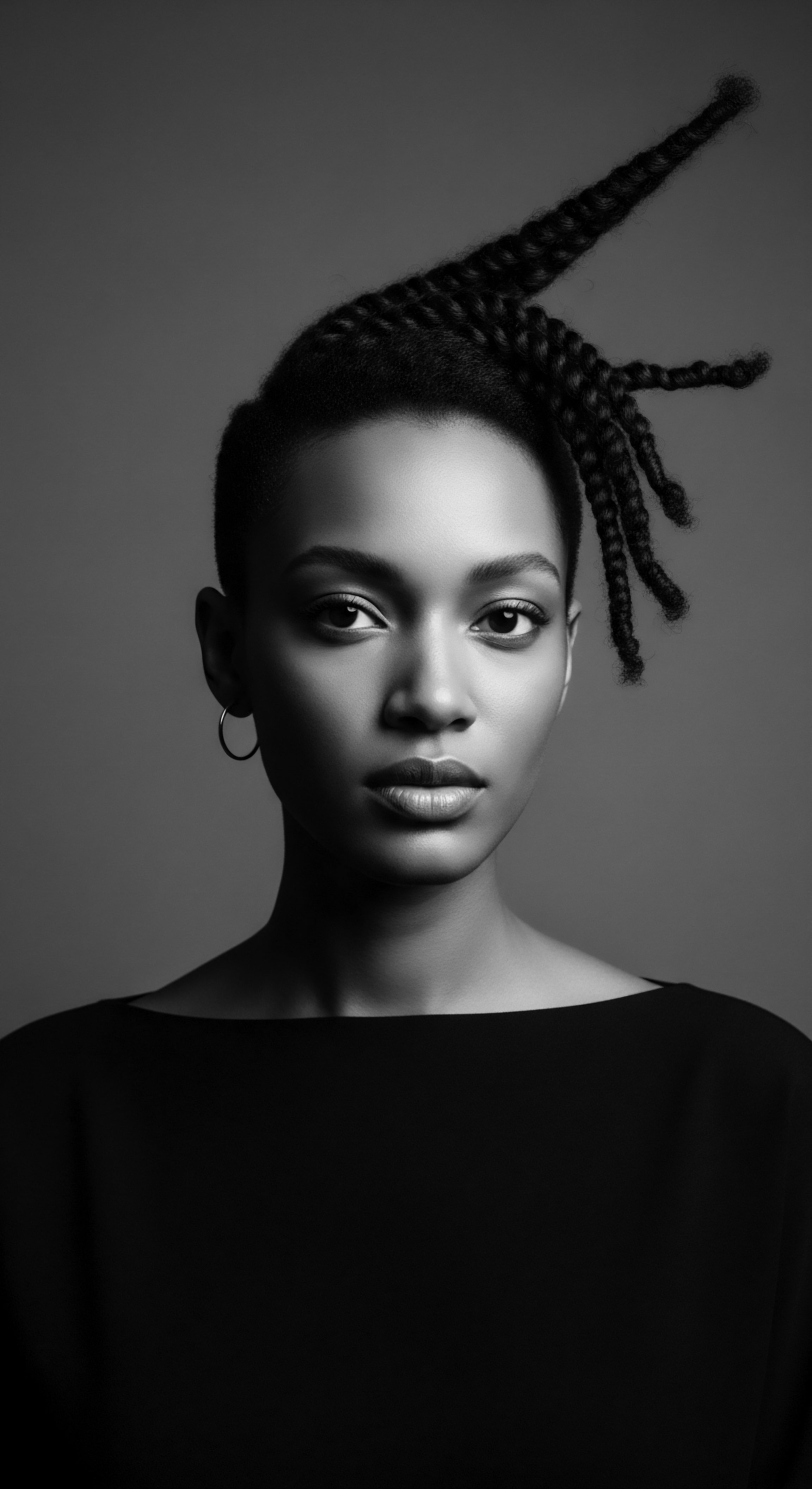
The Unbound Helix ❉ Voicing Identity and Shaping Futures
Beyond mere aesthetics, ancient hair traditions served as powerful statements of identity and belonging. Each curl, coil, and braid pattern could convey specific social signals, reflecting age, marital status, community roles, or even spiritual affiliations. This symbolic language was particularly pronounced in societies where textured hair offered an expansive canvas for such expression.
For instance, in pre-colonial African societies, hairstyles were integral to expressing cultural identity and social affiliation. Styles such as cornrows, braids, and locs varied widely across ethnic groups, each carrying its own set of meanings. The Yoruba people of Nigeria, for example, crafted intricate hairstyles that symbolized their community roles and spiritual beliefs. Skilled braiders held respected positions, as their artistry literally wove the social fabric of their communities into the hair of their members.
This deep connection to hair as a marker of identity would become a source of both pride and profound struggle during periods of oppression. The deliberate shaving of heads by enslavers during the transatlantic slave trade aimed to strip Africans of their identity and cultural heritage, a violent act against their very being. Yet, even under such brutal conditions, the resilience of these traditions shone through, as enslaved Africans found ingenious ways to preserve their hair heritage, often using styles like cornrows to communicate coded messages or even to hide seeds for survival. This quiet defiance speaks volumes about the enduring power of hair as a symbol of selfhood and resistance.

Academic
The academic elucidation of ‘Ancient Hair Traditions’ transcends superficial descriptions, delving into its profound significance as a complex socio-cultural, spiritual, and biological phenomenon, particularly within the vast and varied landscape of textured hair heritage. This term signifies a deep-seated historical continuum where hair served as a primary lexicon for human societies, encoding information about lineage, status, spiritual devotion, and communal cohesion. The intellectual exploration here necessitates an interdisciplinary lens, drawing from anthropology, ethnobotany, historical sociology, and the nascent field of Black hair studies, to unravel the intricate meanings and enduring impacts of these practices. The meaning of Ancient Hair Traditions is thus an interpretation of a living, evolving cultural document, articulated through the very morphology of hair and the hands that have cared for it across millennia.
From an academic vantage point, the designation of ‘Ancient Hair Traditions’ functions as a conceptual framework for understanding the sophisticated systems of hair care and styling that existed prior to, and often in spite of, colonial impositions and Eurocentric beauty paradigms. It highlights the indigenous epistemologies that viewed hair as far more than a cosmetic feature. This perspective contrasts with reductionist interpretations, instead emphasizing the holistic engagement with hair as an extension of the self, a spiritual antenna, and a communal canvas. The delineation of this concept permits a rigorous examination of how these traditions were not merely static customs but dynamic expressions of human ingenuity, adaptation, and resistance.
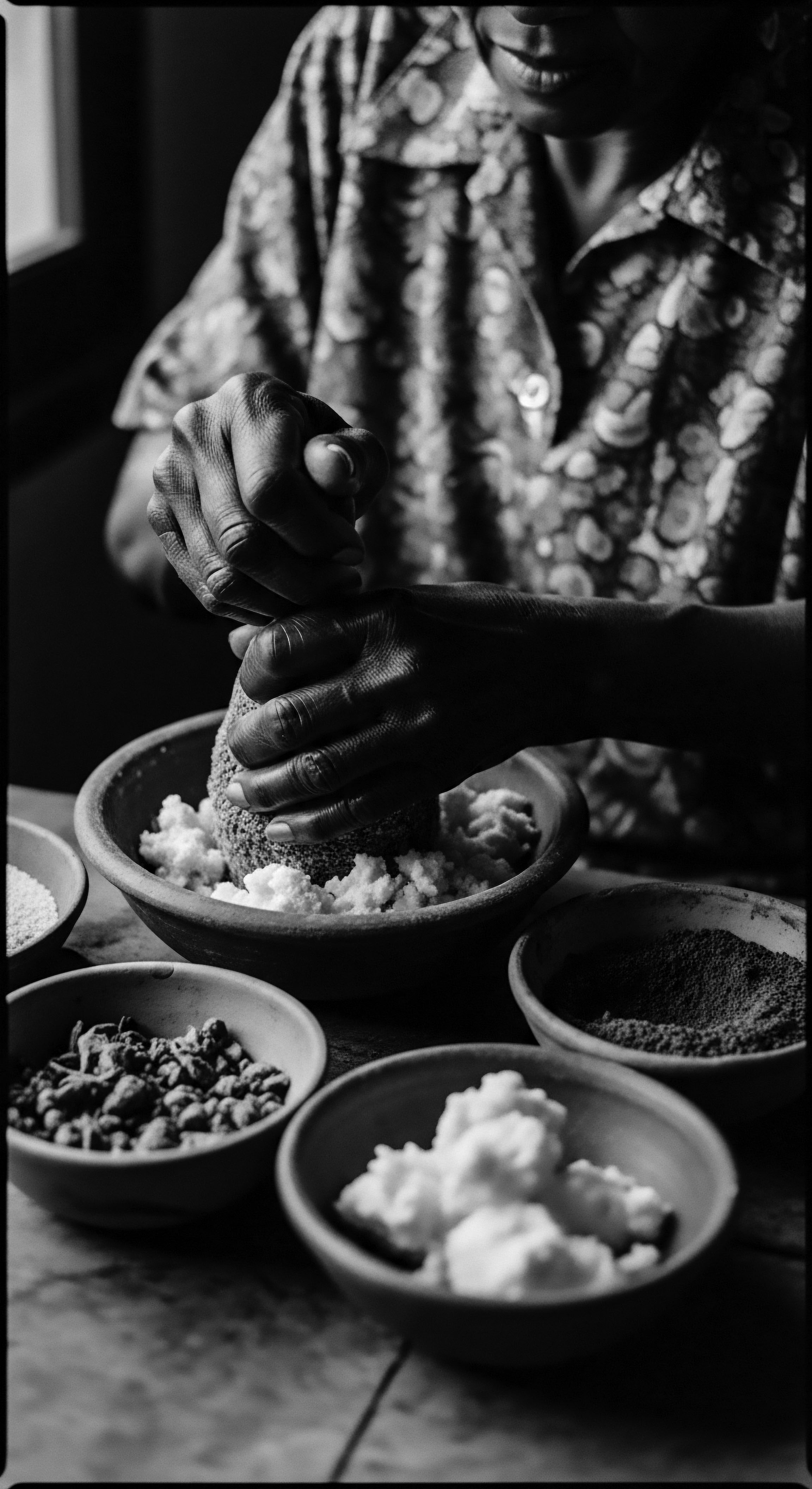
The Semiotics of Strands ❉ Hair as a Communicative System
In numerous ancient African cultures, hair functioned as a highly sophisticated non-verbal communication system, a visual semiotics of identity and experience. Hairstyles conveyed a wealth of information, from an individual’s ethnic group, age, and marital status to their social rank, wealth, and even their religious affiliation. This goes beyond simple identification; it represents a deeply embedded cultural grammar where each braid, twist, or adornment was a meaningful utterance.
For instance, the Fulani people of West Africa are renowned for their distinctive thin, woven braids, often adorned with cowrie shells, beads, or silver coins, which could symbolize wealth, marital status, or even a woman’s readiness for marriage. The intricate patterns of cornrows among various West African tribes were not merely decorative; they could signify a person’s family background, tribe, or even their preparedness for war. The complexity and precision of these styles required considerable skill, often learned over years, and the act of styling itself became a social ritual, a shared moment for transmitting oral histories and communal values.
Ancient Hair Traditions were complex visual languages, where each hairstyle communicated intricate details about an individual’s social standing, spiritual beliefs, and communal ties.
This deep communicative function is particularly evident in the resilience of these traditions during periods of immense upheaval, such as the transatlantic slave trade. While enslavers sought to strip Africans of their identity by shaving their heads, the practice of hair braiding became a powerful act of covert communication and resistance.
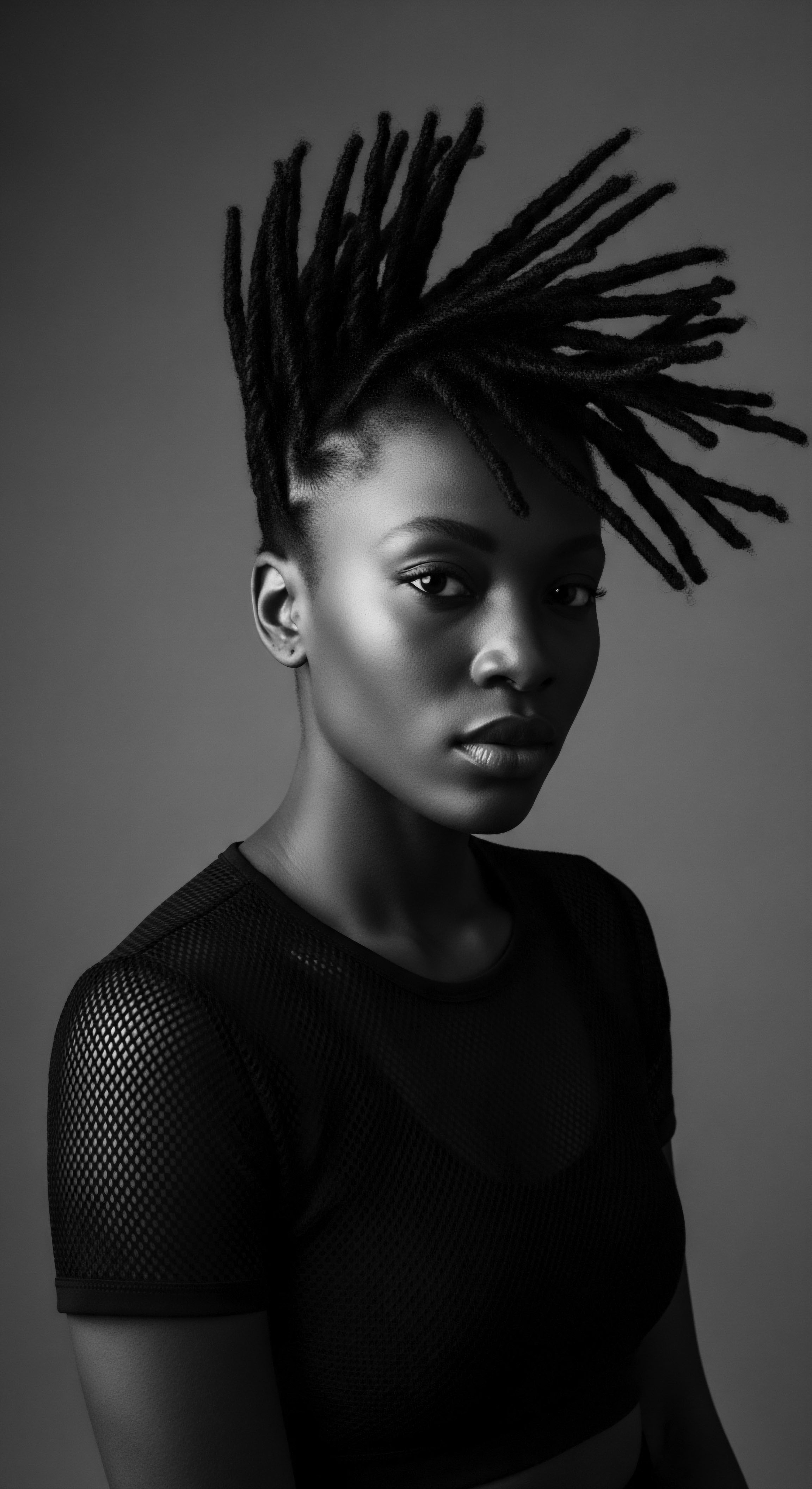
A Case Study in Resistance ❉ Hair as Cartography and Sustenance
One compelling historical example that powerfully illuminates the Ancient Hair Traditions’s connection to textured hair heritage and ancestral practices as a form of resistance is the alleged use of cornrows by enslaved Africans to create maps for escape routes and to hide seeds for sustenance. While direct, verifiable historical documentation for every specific instance remains a subject of ongoing academic discussion, numerous narratives and oral traditions across the African diaspora recount these ingenious methods. For instance, in slave narratives and historical accounts, there are recurring mentions of enslaved women braiding intricate patterns into their hair that were not merely decorative but served as symbolic or literal maps, guiding individuals through unfamiliar terrain towards freedom.
The tight, close-to-the-scalp nature of cornrows made them ideal for concealing small, vital items. Beyond mapping, there are accounts of enslaved individuals braiding rice grains and other seeds into their hair before forced migration across the Atlantic or during escape attempts within the Americas. These hidden seeds represented not only a potential source of food in their desperate flight but also a symbolic connection to the agricultural practices and food sovereignty of their ancestral lands.
This act, while seemingly small, held immense purport ❉ it was a silent, defiant assertion of selfhood and a profound commitment to survival, carried within the very strands of their textured hair. It transformed hair from a mere physical attribute into a vessel of hope and a tangible link to a heritage that colonizers sought to erase.
The ingenuity behind these practices highlights a sophisticated understanding of both the hair’s physical properties and its potential as a clandestine medium. It also speaks to the profound psychological and cultural significance attributed to hair, where its manipulation could serve both practical and deeply symbolic functions in the face of unimaginable oppression. This particular historical example, while sometimes difficult to quantify statistically due to the clandestine nature of such acts, offers an unparalleled illustration of the strategic and symbolic value of textured hair within the context of survival and resistance. It underscores the enduring substance of Ancient Hair Traditions as a source of resilience and a testament to the human spirit’s refusal to be entirely subjugated.
- Concealment and Mobility ❉ The tight, flat nature of cornrows allowed for the secure concealment of small items like seeds, which were crucial for survival during long journeys or in unfamiliar environments.
- Symbolic Cartography ❉ The geometric patterns of braids could be adapted to represent paths, rivers, or landmarks, acting as a discreet visual guide for those seeking liberation.
- Preservation of Heritage ❉ This practice, whether for literal escape or symbolic defiance, served as a powerful means of preserving ancestral knowledge and cultural practices in the face of forced assimilation.
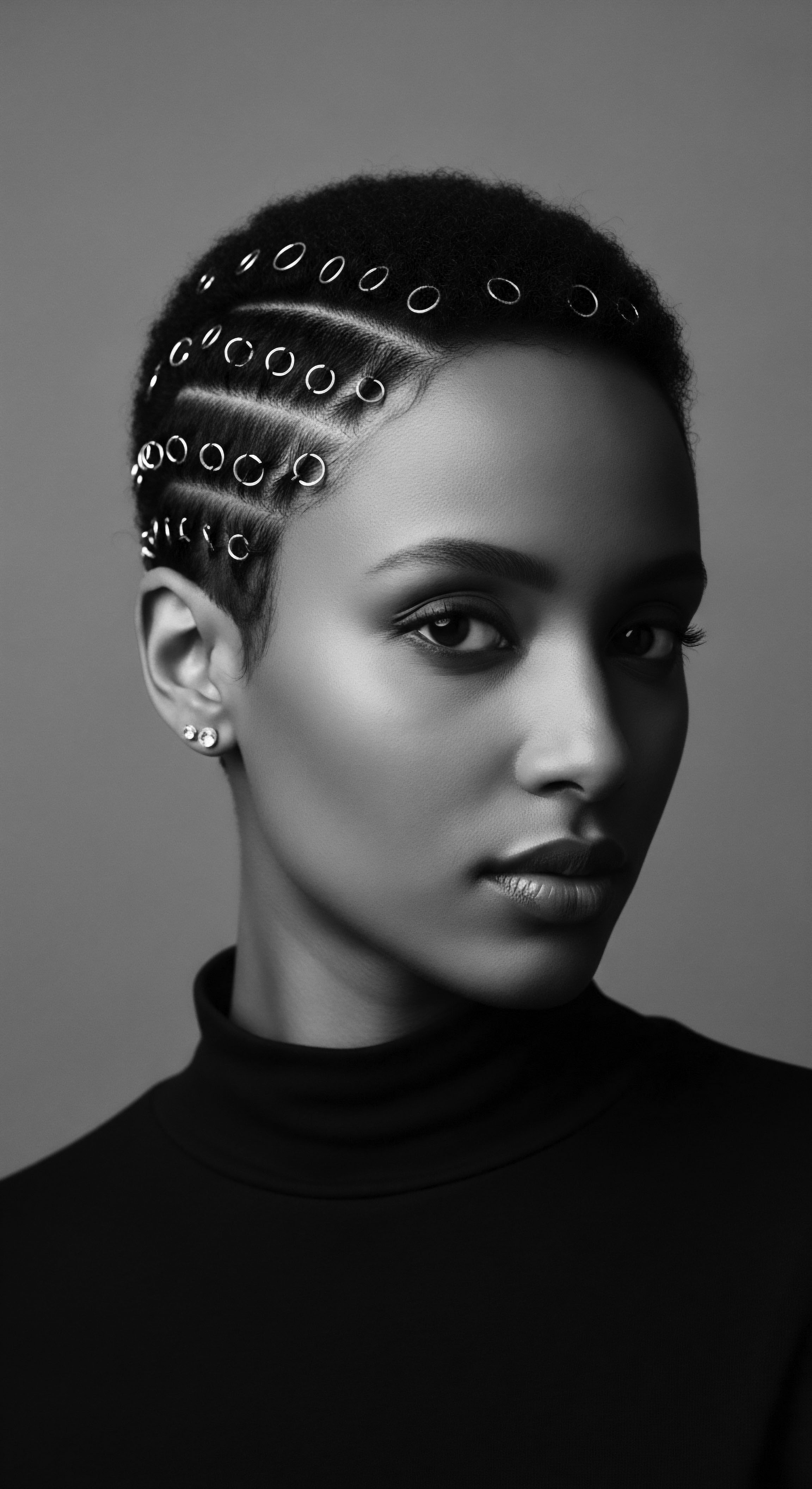
The Spiritual and Ritualistic Dimensions ❉ Hair as a Sacred Interface
The interpretation of Ancient Hair Traditions is incomplete without a deep dive into their spiritual and ritualistic dimensions. For many ancient African cultures, hair was not simply an anatomical extension but a sacred interface between the earthly and spiritual realms. It was often considered the most elevated point of the body, thus rendering it the closest to the divine and a potential conduit for spiritual interaction. This spiritual meaning permeated every aspect of hair care, from the choice of tools and ingredients to the hands permitted to touch one’s hair.
In Yoruba cosmology, for example, hair holds immense significance, acting as a medium of spiritual energy that connects individuals to their ancestors and deities. Certain Orishas, or intermediary gods and goddesses in Yoruba mythology, were even described as skilled hairdressers, further cementing the divine association with hair styling. The intricate braiding techniques performed by revered practitioners were not merely acts of beautification but sacred rituals, believed to invite blessings, ward off malevolent forces, or communicate with the ancestral spirits. The purposeful adornment of hair with amulets, cowrie shells, or beads also served as a protective measure, guarding against spiritual intrusions.
This deep reverence meant that hair was often seen as a source of power, and its styling or cutting was frequently reserved for close family members or trusted community members, underscoring the intimate and communal nature of these practices. The meticulous process of caring for hair, often spanning hours or even days, was a meditative act, a moment of connection to the divine and to one’s lineage. This is a crucial clarification ❉ it was not merely about outward appearance, but about internal and communal well-being, deeply intertwined with spiritual principles.
Hair’s sacred status in ancient cultures made its care a spiritual act, connecting individuals to ancestral wisdom and divine energies.

Beyond the Physical ❉ Hair as a Reflection of Collective Identity and Resilience
The academic definition of Ancient Hair Traditions extends to its function as a powerful symbol of collective identity and enduring resilience, particularly for textured hair communities. The imposition of Eurocentric beauty standards during colonization and slavery sought to dismantle these rich traditions, deeming textured hair as “uncivilized” or “unprofessional.” This deliberate assault on hair was a calculated attempt to strip individuals of their cultural identity and instill a sense of inferiority.
Despite these systemic efforts to erase ancestral practices, textured hair became a potent symbol of resistance and cultural preservation. The continued wearing of traditional styles, the development of new protective styles born out of necessity, and the communal sharing of hair care knowledge became acts of defiance. This resistance found a powerful resurgence in the 20th century with movements like the Black Power Movement and the Natural Hair Movement, where the Afro, dreadlocks, and braids became unapologetic statements of Black pride and a rejection of imposed beauty norms.
The meaning of Ancient Hair Traditions, therefore, is not confined to the past; it is a living legacy that informs contemporary understandings of beauty, self-acceptance, and cultural affirmation within Black and mixed-race communities. It highlights how the historical treatment of textured hair is intrinsically linked to broader societal narratives of race, power, and identity. The scholarly examination of these traditions allows for a deeper appreciation of the continuous dialogue between historical antecedents and current expressions of hair identity, demonstrating how ancestral wisdom continues to shape the present and guide future generations. The study of these traditions provides a nuanced lens through which to examine the enduring impact of historical trauma on self-perception, alongside the incredible capacity for cultural continuity and renewal.
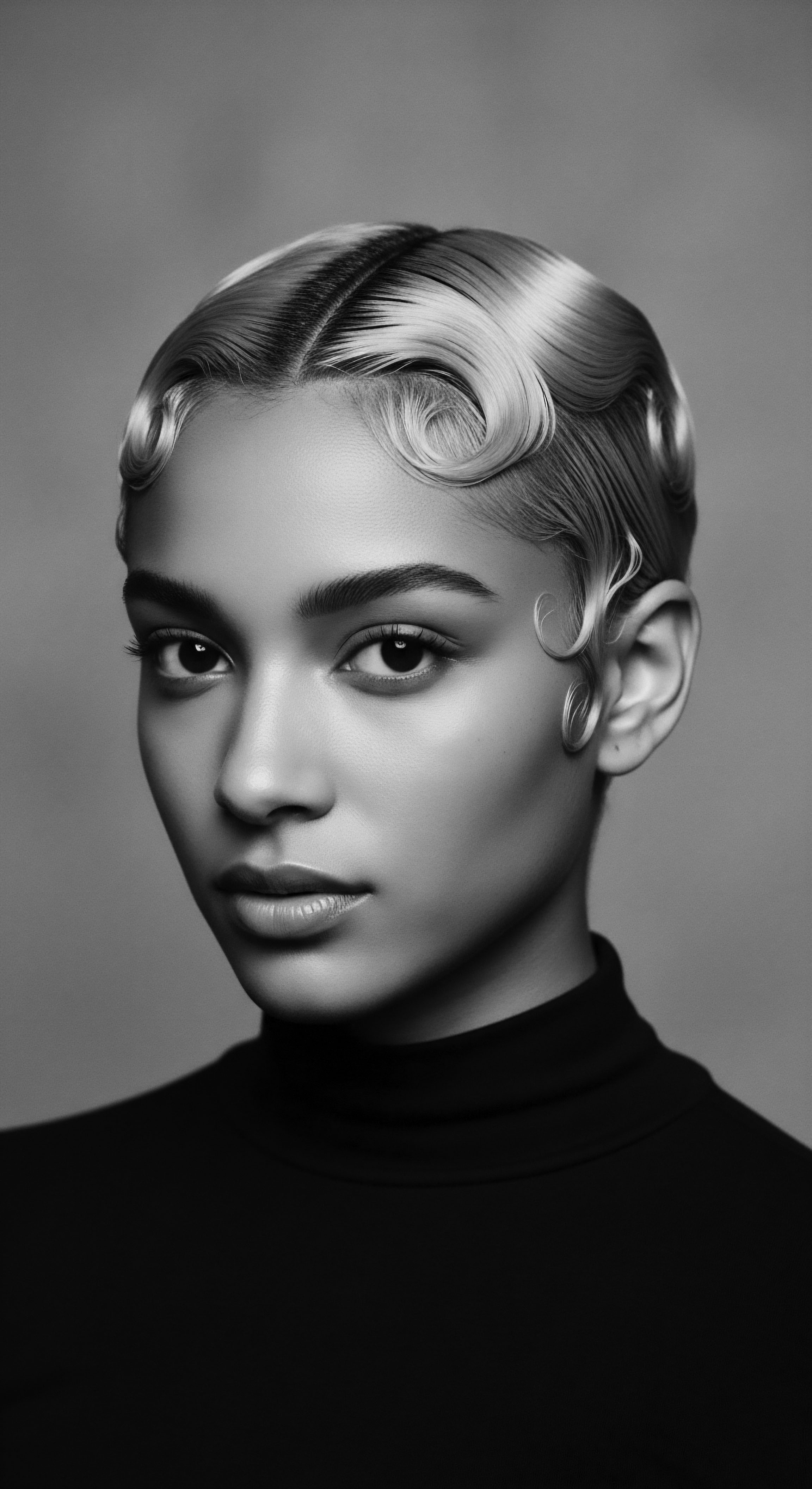
Reflection on the Heritage of Ancient Hair Traditions
The exploration of Ancient Hair Traditions, particularly through the lens of textured hair heritage, invites a profound meditation on the very ‘Soul of a Strand.’ It is a journey that begins not in distant historical texts, but in the elemental rhythm of our own hair, recognizing it as a living chronicle of ancestral wisdom and resilience. Each curl, every coil, holds within its helix the echoes of generations who understood hair as more than a physical attribute; they perceived it as a sacred crown, a spiritual conduit, and a vibrant canvas for identity. This deep appreciation transcends mere definition, moving into a realm of embodied knowledge and reverent connection.
The tender thread of ancient care practices, woven through communal rituals and shared stories, reminds us that true wellness is holistic, extending beyond topical application to encompass emotional and spiritual well-being. The resilience of textured hair, so often devalued in modern narratives, finds its true significance in the enduring legacy of those who preserved its integrity and symbolism against formidable odds. The very act of caring for textured hair today, whether through traditional methods or contemporary innovations, becomes a conscious act of honoring a heritage that refused to be erased. It is a quiet rebellion, a joyful reclamation, and a powerful affirmation of self.
As we look forward, the unbound helix of textured hair continues its journey, voicing identity and shaping futures with every new style and every renewed embrace of its natural form. The wisdom embedded in Ancient Hair Traditions offers not a rigid set of rules, but a guiding philosophy ❉ that our hair is a continuous link to our past, a vibrant expression of our present, and a boundless source of strength for what is yet to come. It reminds us that beauty, at its deepest level, is an authentic connection to our roots, celebrated in every unique strand.
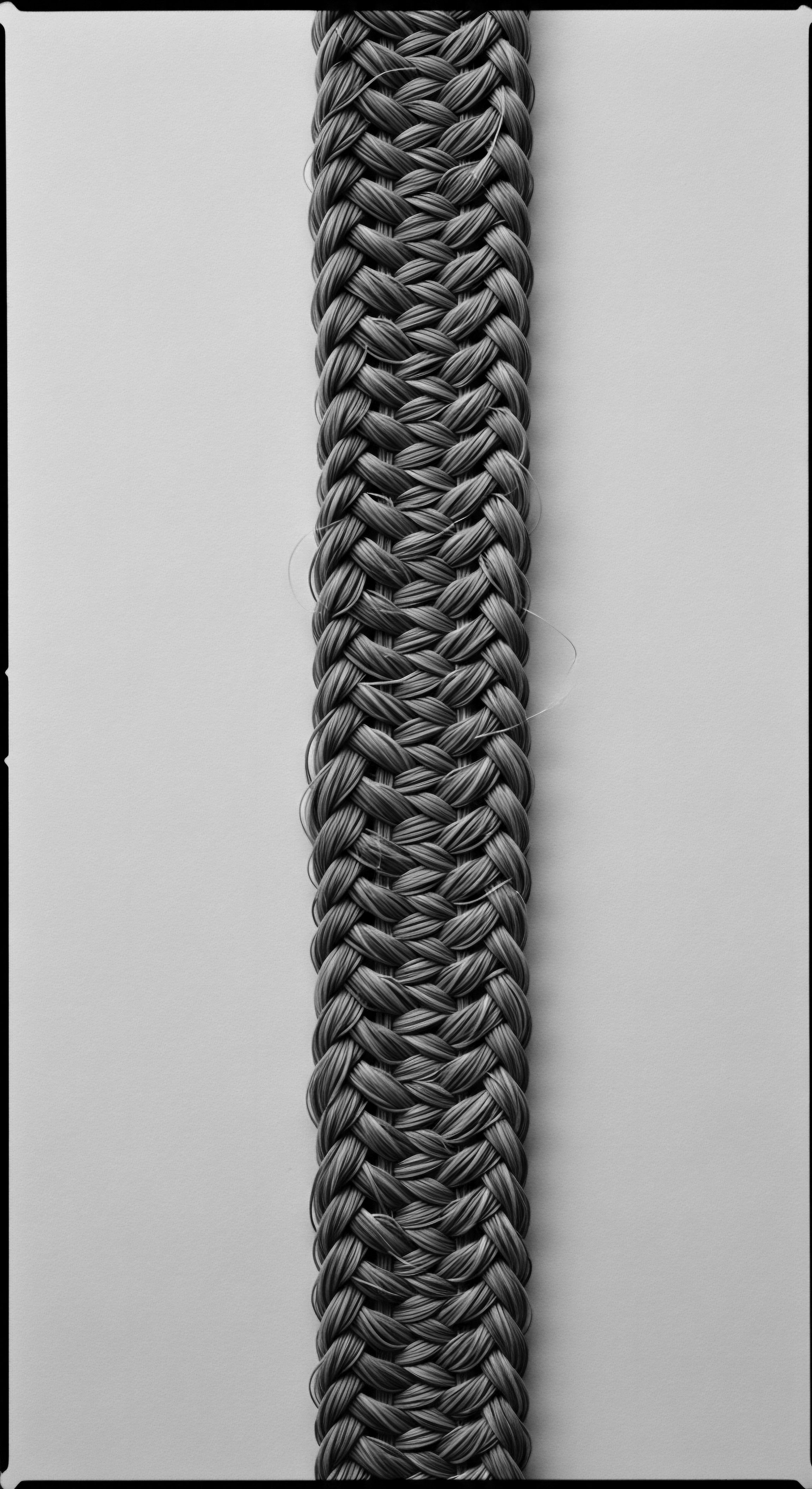
References
- Byrd, A. & Tharps, L. (2014). Hair Story ❉ Untangling the Roots of Black Hair in America. St. Martin’s Griffin.
- Gordon, M. (2018). The Cultural Significance of Hair in Ancient African Civilizations. Journal of Pan African Studies.
- Hooks, B. (1992). Black Looks ❉ Race and Representation. South End Press.
- Patton, T. O. (2006). Pushing the Line ❉ American Women’s Hair and the Quest for Power. University of Pennsylvania Press.
- Robinson, A. (2000). The African American Slave Narratives ❉ An Anthology. Penguin Books.
- Tharps, L. (2001). Hair Story ❉ Untangling the Roots of Black Hair in America. St. Martin’s Press.
- White, D. (2000). Slave Narratives and the History of African American Hair. Journal of American History.
- Wilkinson, C. (2000). Hair ❉ A Cultural History. Bloomsbury USA.
- Willis, D. (2000). Hair ❉ African American Hair Styles Past and Present. Simon & Schuster.
- Zwelethu, M. (2002). African Hair ❉ The History of Styles and Adornment. Struik Publishers.
